Pros and cons
To begin, consider the features of white in the design of the walls:
| Benefits | disadvantages |
|---|---|
| Designers joke that white does the work for them, adding space and air. Therefore, it is considered a win-win option. | If you use cheap paint, then the walls acquire a greenish "hospital" shade. Therefore, the material must be tinted at least a little. |
| Creamy, pearl and snow-white shades serve as an excellent backdrop for furniture and decor. | With external simplicity, white is one of the most difficult, requiring special attention to decoration during repair and order in the house. |
| Light colors give a feeling of freshness and comfort. | Not suitable for those who associate it with sterility and impersonality. |
Shades of white
White color has several incarnations. Snow-white with a blue and green tint is more suitable for rooms with windows facing the south side. Smoky white looks cool, as it has a gray undertone, but at the same time gives the interior coziness and tranquility. Unfortunately, in the dark rooms on the north side, the smoky one looks dirty white, so its use in poorly lit rooms is undesirable. Cold shades also include snow (spotless white), which gives brightness to the room.
The photo shows a small bedroom with white walls that visually expand the space.
Warm tones include the white color of the walls with yellow and pearlescent shades: the color of "natural linen", creamy, "sea shell", "honey dew". The cream (milk) shade of the walls is especially popular. The temperature of the ivory color depends on the lighting, but its nobility remains unchanged.
Warm tones are most suitable for classic and rustic interiors, while cold tones are suitable for modern, industrial and minimalist.
The photo shows a living room-library in warm cream colors.
The best combinations
The white color of the walls is universal, so it looks harmonious with most shades. Serious and uncompromising natures will like the monochrome setting - a contrasting combination of black and snow-white. This is a traditional option, giving an atmosphere of rigor and respectability, even if little money has been spent on repairs.
Nature lovers will appreciate the combination of pearl, green and wood. This solution is relevant for the Scandinavian and eco-style: light walls bring to the fore furniture and decor from natural materials.
Milk color also acts as a magnificent background for bright details: yellow accessories make the atmosphere joyful and sunny, and red ones emphasize the courage and originality of the owner of the apartment.
In the photo there is a living room with white walls and a black accent area in the TV niche.
The white color of the walls in the interior looks great in combination with a calm beige and luxurious golden, giving the living room or bedroom sophistication.
Cold blue, blue and mint colors are suitable for rooms in a marine style, as well as modern interiors that want to give freshness and airiness.
A combination of white and gray is considered to be a winner: this option never goes out of fashion, and besides, it is easy to dilute with color spots.
In the photo there is a living room with white walls, which recedes into the background, highlighting the original furniture and a magnificent fireplace.
Which curtains are suitable?
Another irrefutable advantage of white walls in the interior is their versatility. You can change textiles - curtains, bedspreads, pillows - and the room will be transformed without any special costs.
When buying curtains, it is worth considering the rule of three colors. Since white is the main color of the room, you need to choose curtains either as an additional shade (it occupies 30% of the room) or as an accent (10%).
The design of the curtains depends on the chosen direction: multi-tiered curtains will fit into the classic style, and laconic ones into any modern one. As for the patterns: they are appropriate if the environment is not active, that is, white wallpaper or upholstery should not contain ornaments. A good pair - the same curtains and pillows.
In the photo are soft beige curtains that soften the bright whiteness of the living room.
A great option - dark monophonic curtains of saturated colors that will make the interior vibrant and modern.
If you hang curtains that are identical in color to the walls, this will add light and sophistication, but there is a risk of creating an unprepossessing interior. This solution looks impressive if the rest of the room is designed in white tones.
In the photo there is a small bedroom with pure white walls, light textiles and matching furniture.
Finish options
The snow-white interior involves the choice of materials for every taste, but how to make white walls in your apartment or house yourself?
The most budgetary and popular solution is emulsion paint. It is easy to care for her, moreover, it is applied without difficulty, in one or two layers. The texture can be glossy (it has a cold shine, but it is easier to wash) or matte (it better hides the imperfections of the walls). If the surface gets dirty, you can simply repaint it. The only drawback is that the walls should be smooth, perfectly prepared.
Another way of decoration is decorative plaster. It makes the interior more diverse, but the textured surface is more difficult to care for. In addition, the next repair will have to clean the coating to the base.
For the bathroom, ceramic tiles are traditionally chosen. Gloss reflects light, so for small bathrooms it is an ideal choice. The tile is environmentally friendly, durable and absolutely not afraid of moisture (which can not be said about the seams). It is also suitable for the kitchen apron, protecting the walls from dirt.
The photo shows painted white walls turning into the white ceiling of the attic. The kitchen apron is tiled with dark grout.
A relatively inexpensive method of decoration is wallpaper for painting (non-woven, vinyl, paper). They well hide the flaws of uneven walls. But they need to be glued joint to joint, so that the surface looks perfect.
Brickwork does not go out of fashion either. It is appropriate not only in the loft style, but also in Provence, fusion and scandy. There are several ways to create a white brick wall:
- paint a natural terracotta wall, having previously cleaned it from salts and primed (it will be practically impossible to remove the paint later);
- forming bricks with plaster, then paint;
- buy gypsum tile and stick it.
Not so popular, but attractive way of decorating the walls is a tree: lining or panels. Not only houses in the country house are revetted with a tree, but also apartments, when you want to bring a touch of suburban atmosphere to the atmosphere.
What style is better to design?
White walls in a house or apartment are, first of all, universality. They give the classic style nobility, perfectly combining with rich textures, luxurious furniture from expensive breeds and stucco molding on the ceiling.
White walls are the business card of a Scandinavian-style apartment. They are supported by do-it-yourself decorative elements, budget furniture, cozy textiles and home plants.
White walls in the interior with a loft orientation add space to the room.In such industrial apartments it is important to leave a light background: deliberately rough filling (furniture and decor) should be balanced by a light, unobtrusive finish.
In the photo there is a loft-style study. The white color of the walls serves as a backdrop for contrasting furniture, and the color of the floor emphasizes the brutality of the decor.
The milky shade invariably remains a favorite for the style of shabby chic, which is appreciated by romantic people. Antique furniture, scrapes, fresh flowers and light textiles give a feeling of airiness and at the same time home living.
In high-tech style, the white color of the walls remains the most popular. With the help of illumination of different colors, a snow-white room can change its appearance depending on the needs of its owner.
How does it look in the interior of the rooms?
It is the white walls that help to put together "incompatible" interior items.
In the photo there is a fusion-style living room, where things with history are united by one common background. Wood, terracotta and turquoise details look interesting on it.
A snow-white background also emphasizes bright elements, and contrasting details look even more saturated. Black and brown, he adds graphicness and rigor.
The photo shows a living room with a neutral background, which makes the furniture upholstery visually brighter.
The white color of the walls is appropriate in a spacious apartment, and in a small studio, where there is almost no empty space. It increases the light and visually erases the boundaries between the walls and the ceiling.
Photo gallery
White color looks beneficial in any interior. This is a stylish, practical and budget solution that is distributed abroad and is increasingly gaining popularity in Russia.

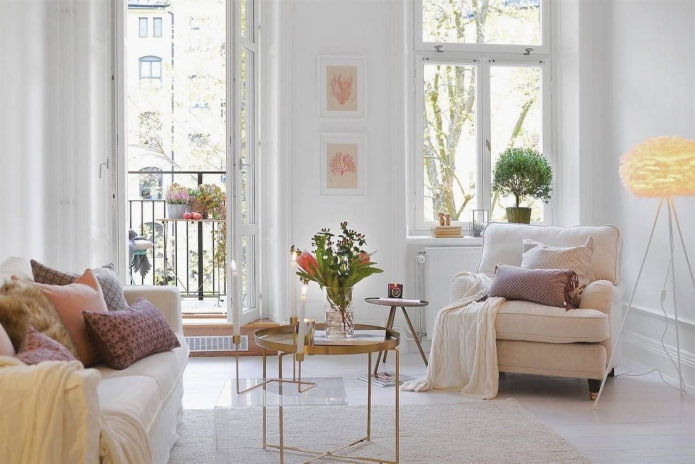
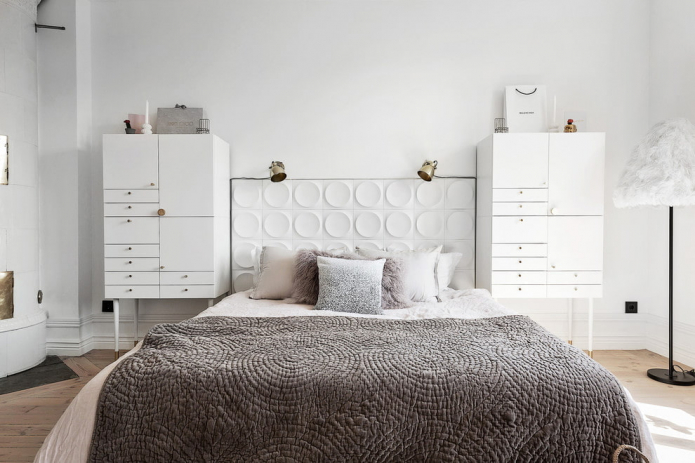
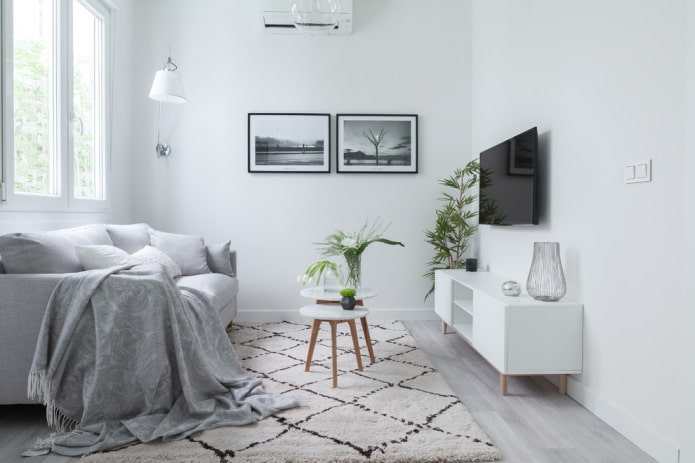

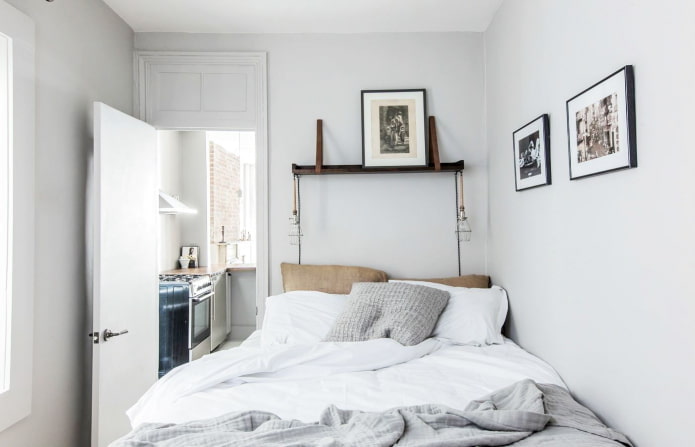
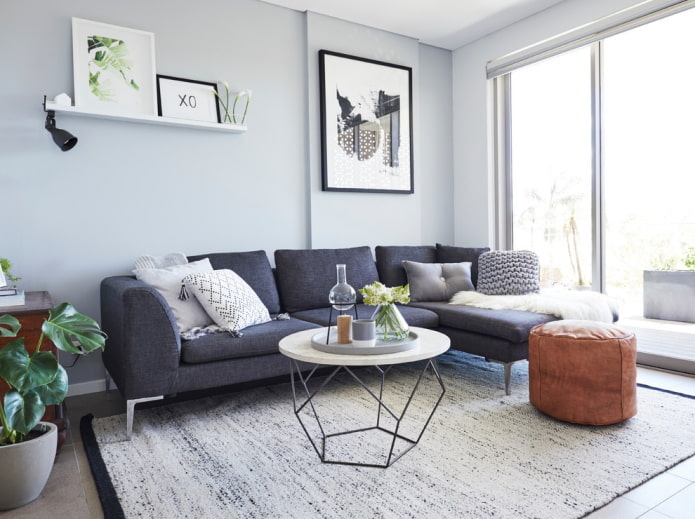

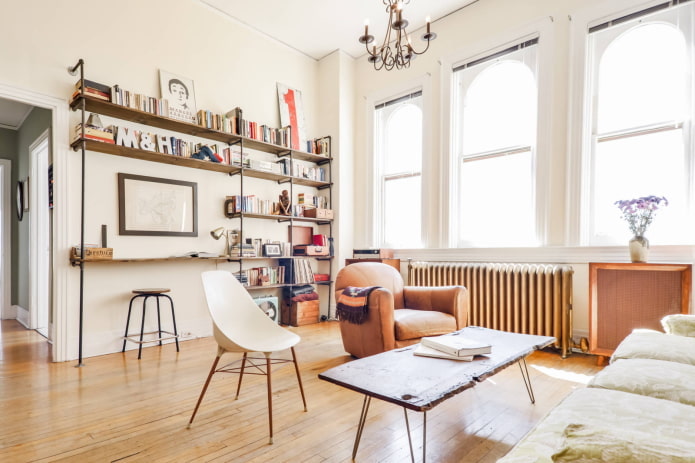

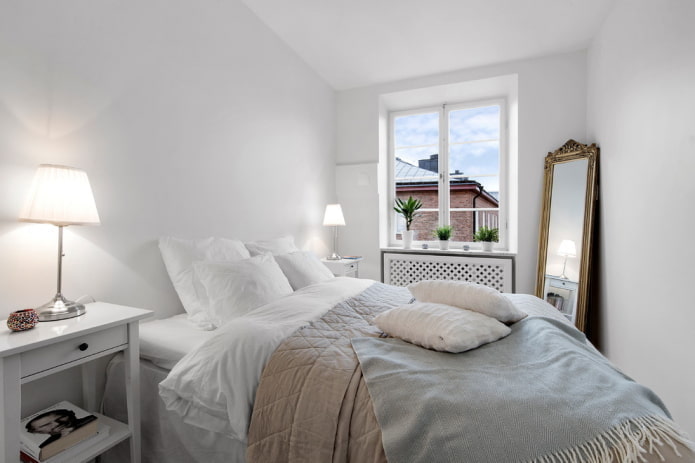

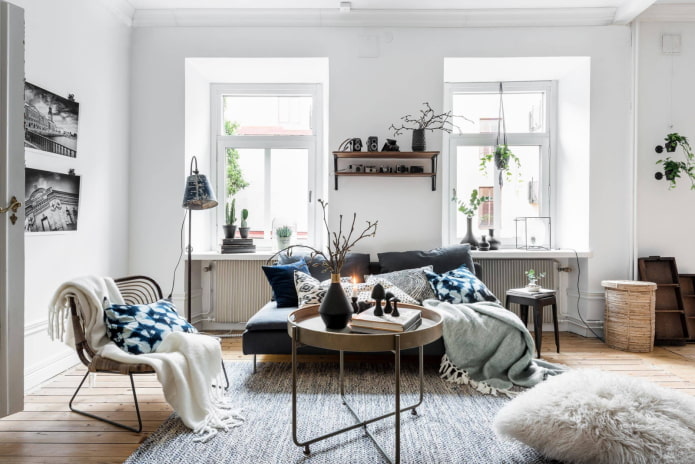
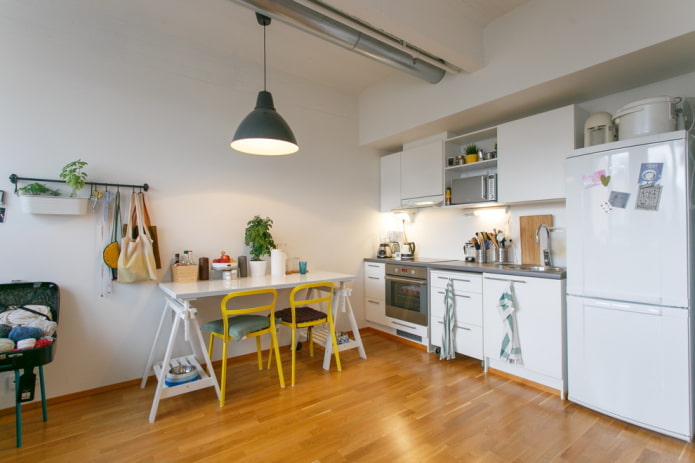

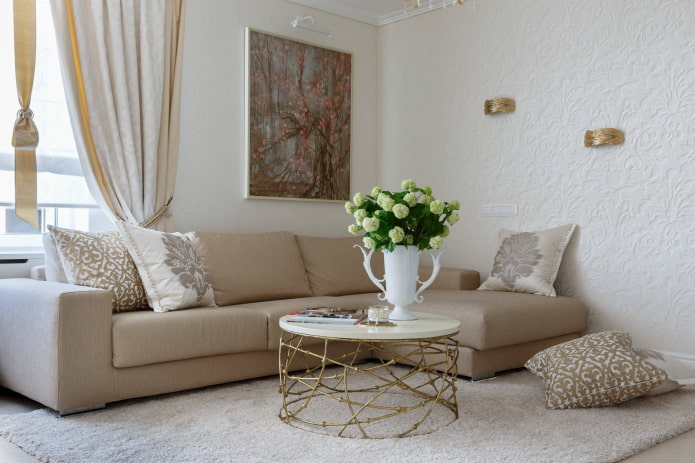
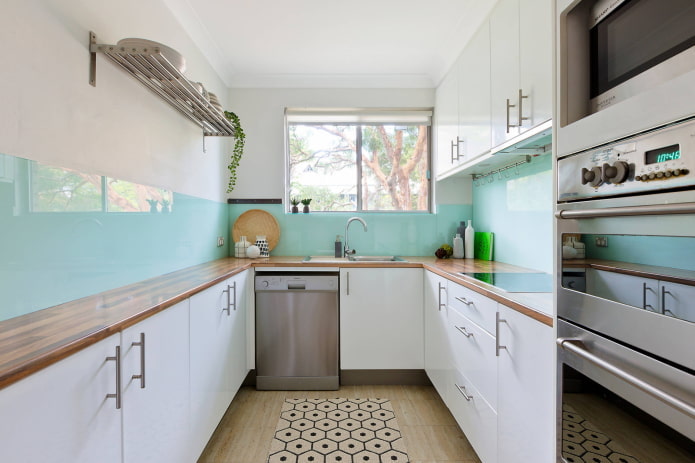
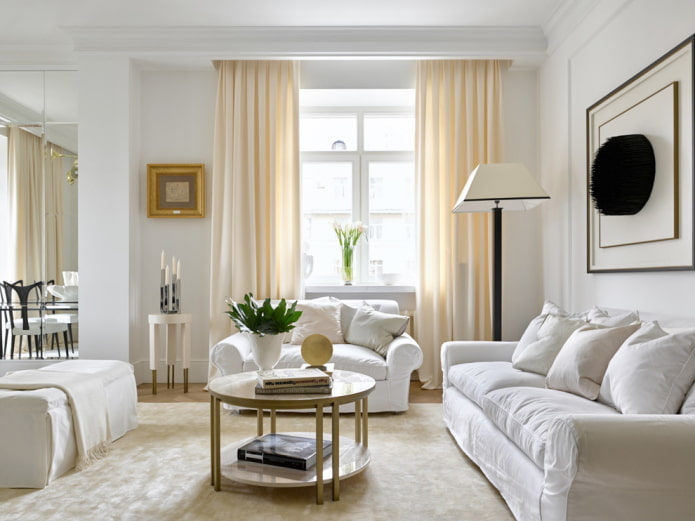
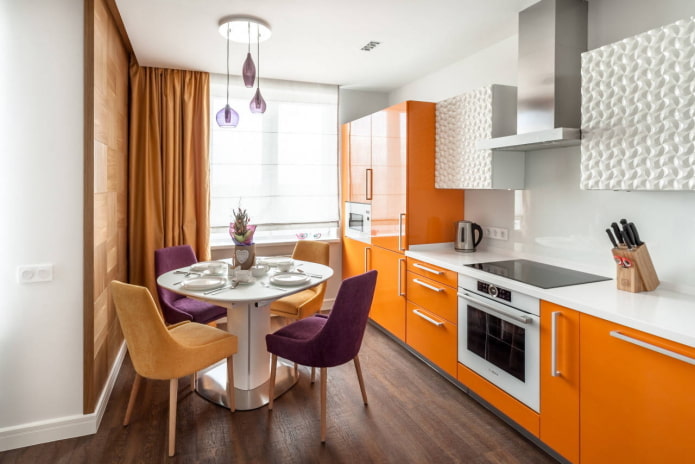
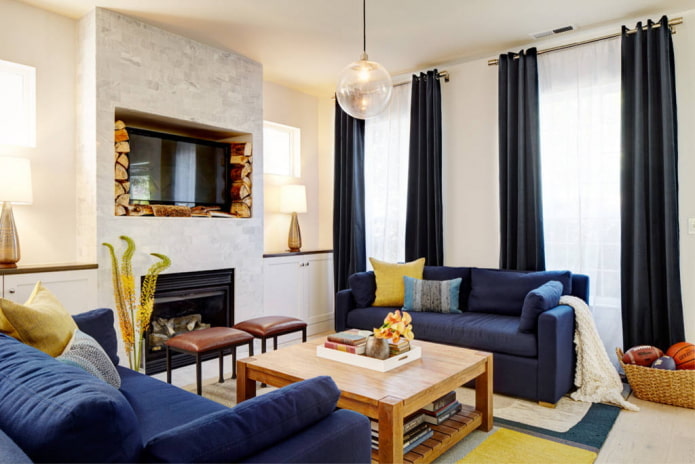
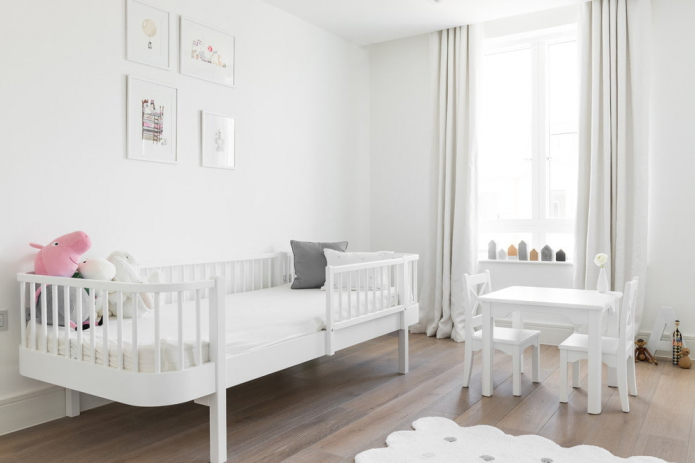
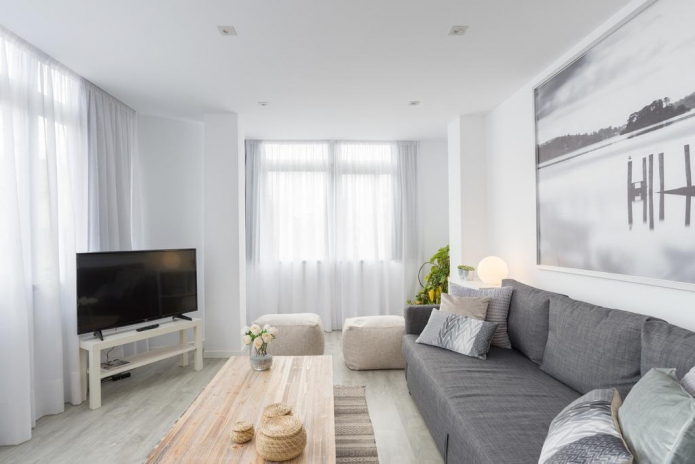
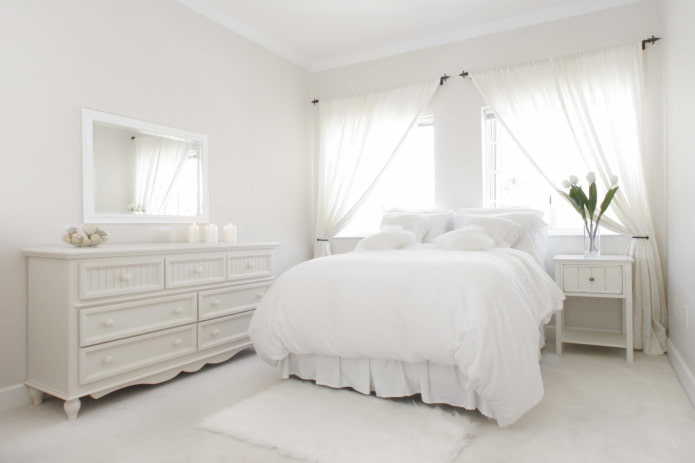
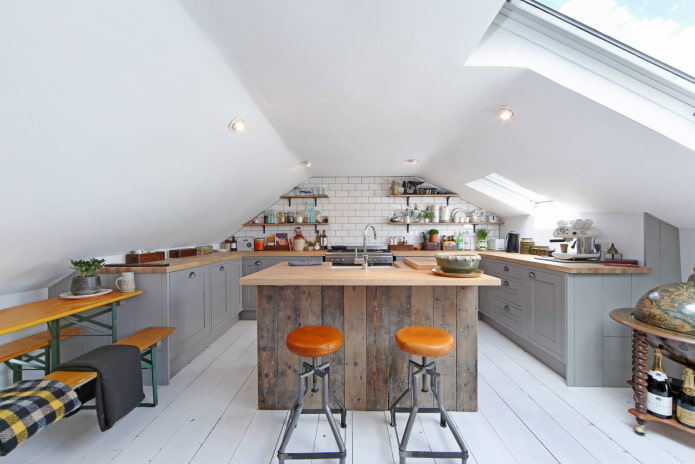
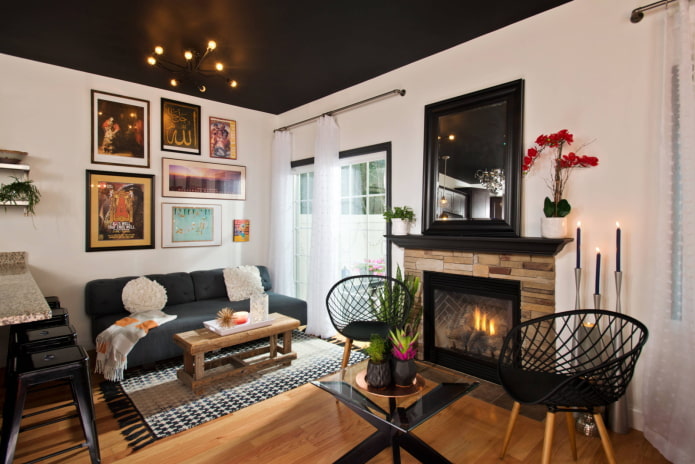
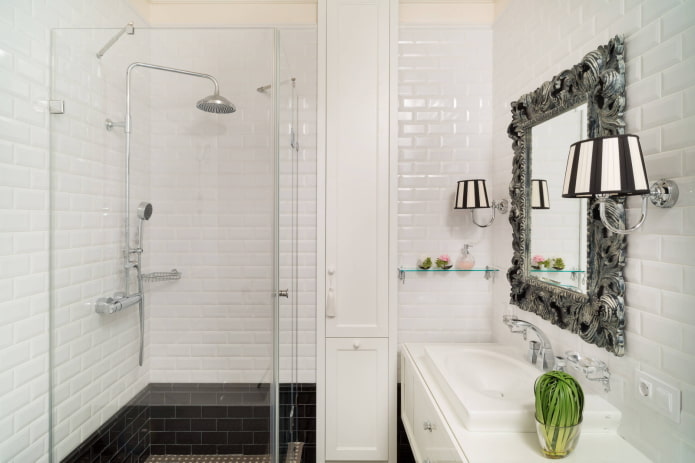
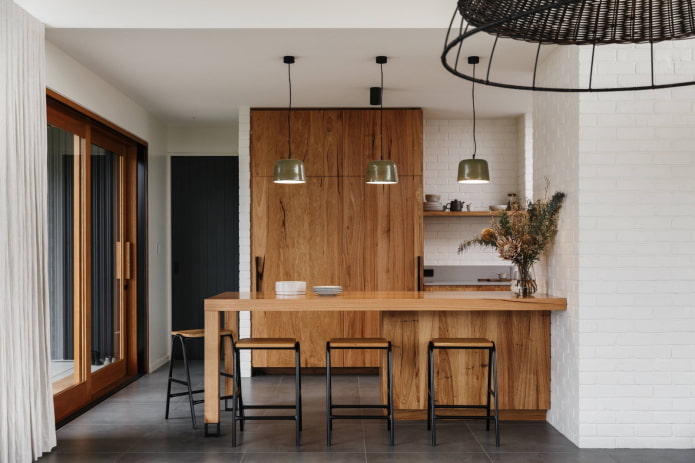
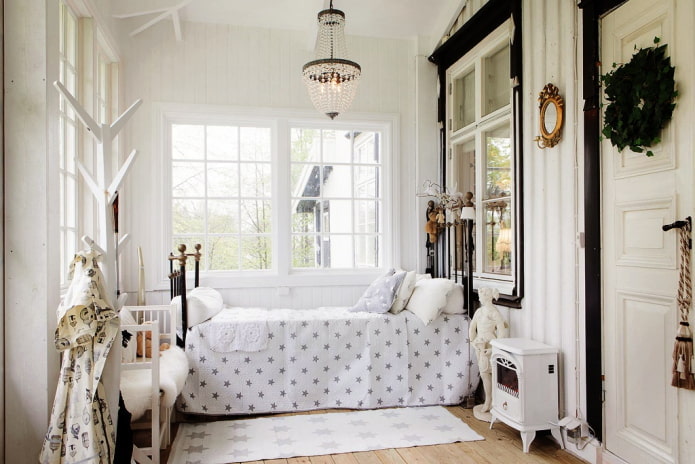
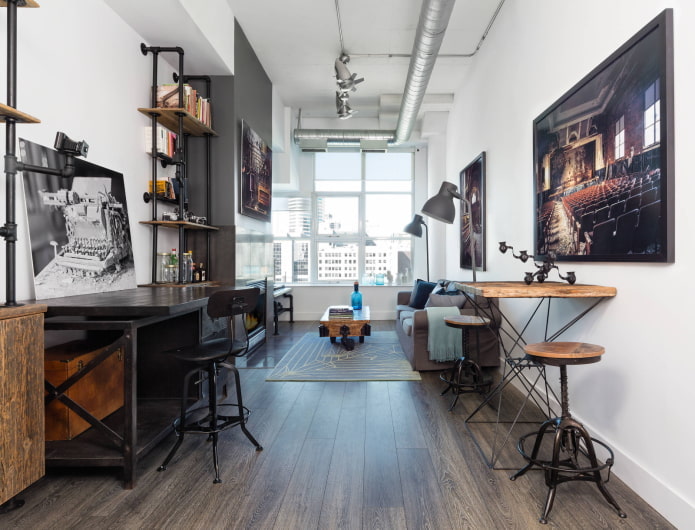
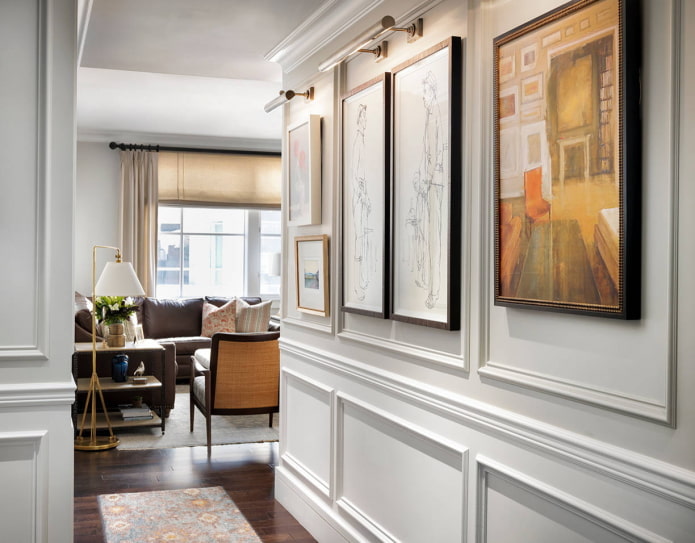
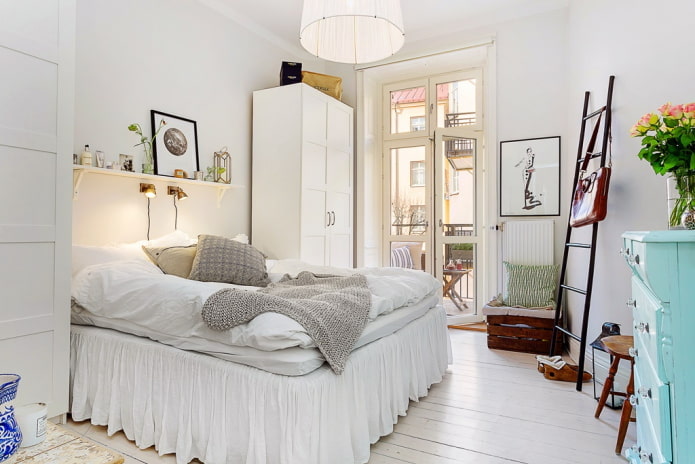
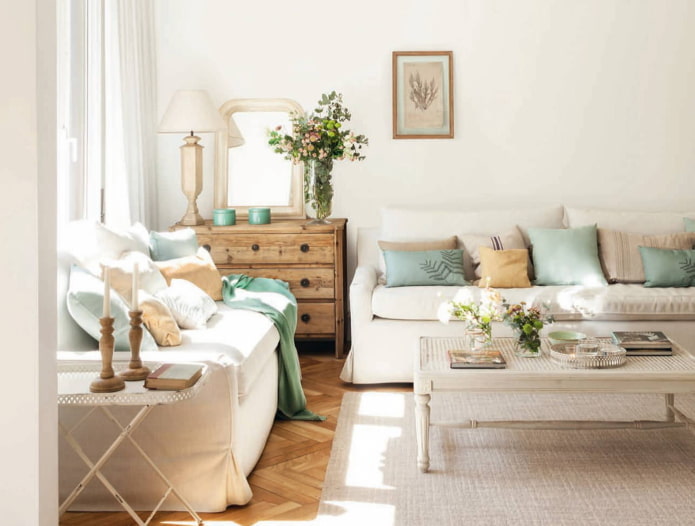
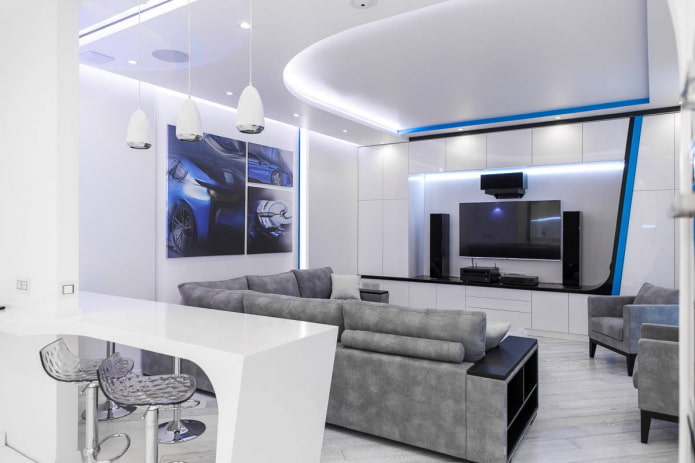
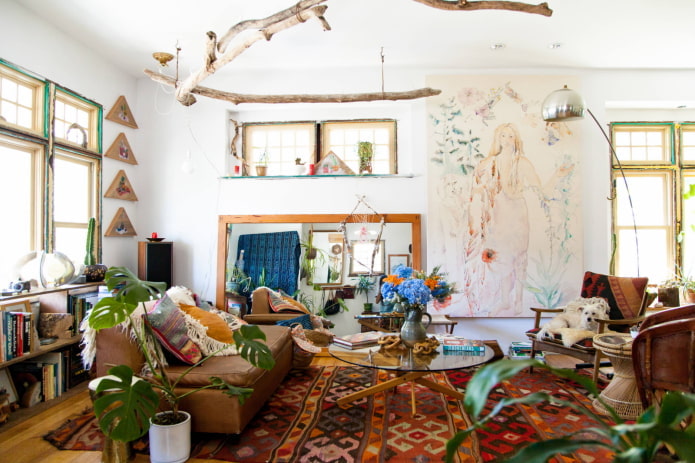
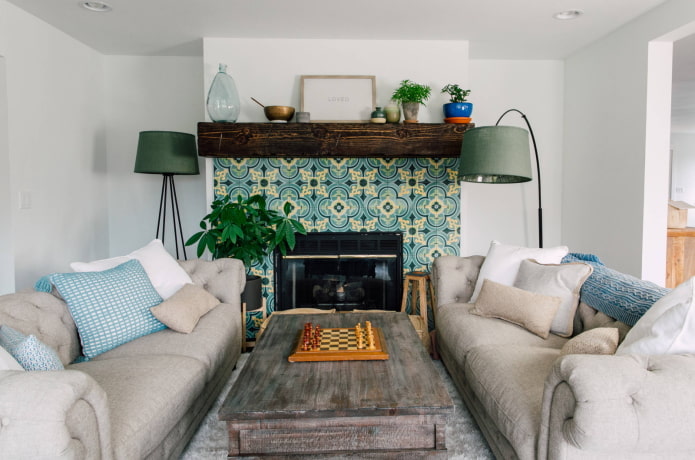

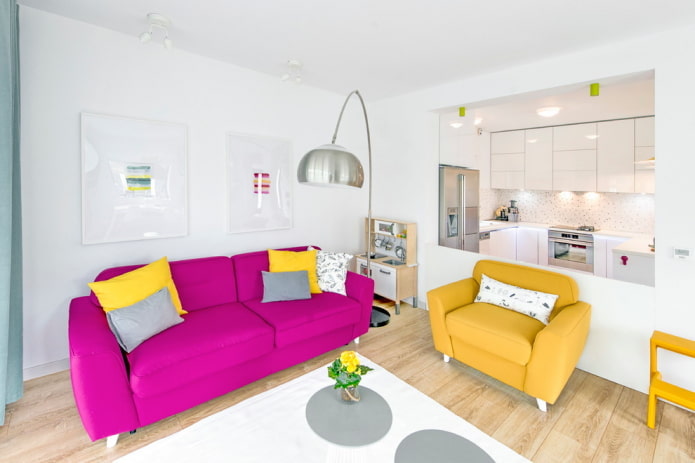
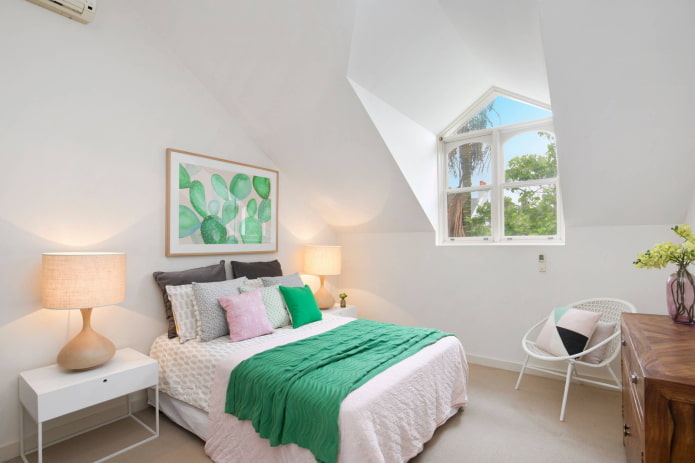

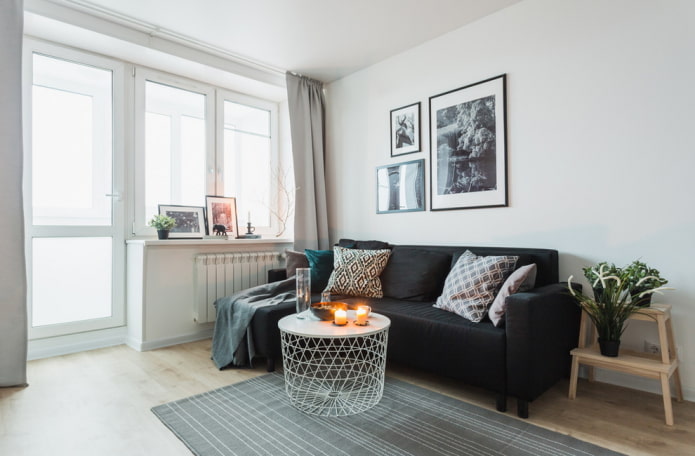

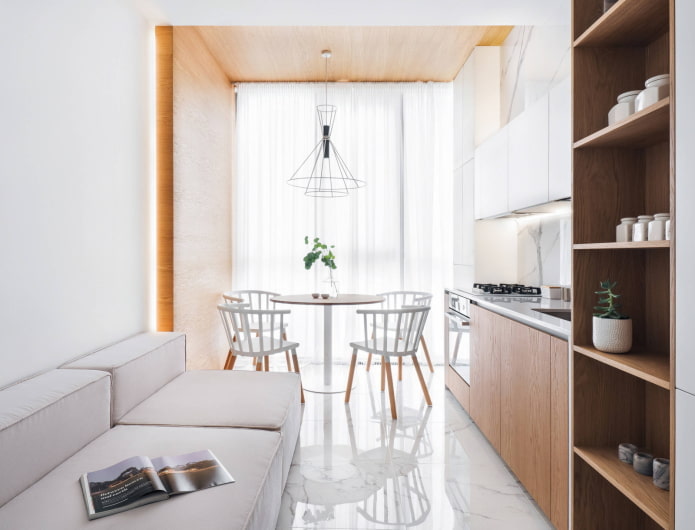
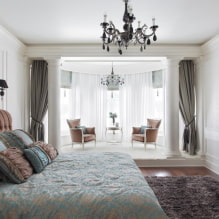
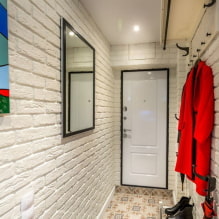
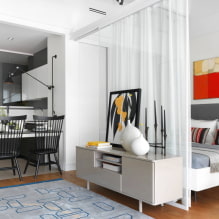
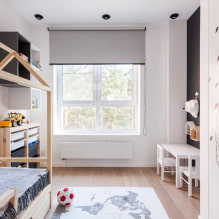

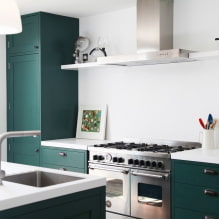
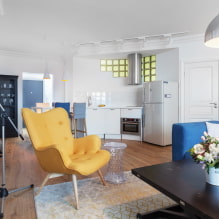
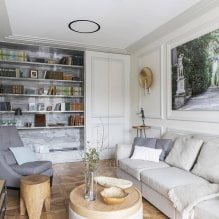
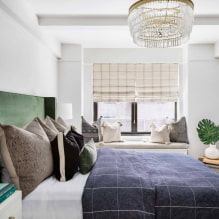

 Top 10 Trends in Interior Design 2020
Top 10 Trends in Interior Design 2020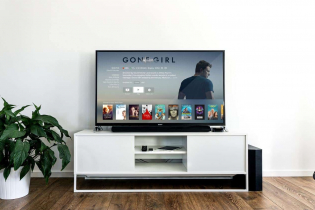 Rating of cheap TVs with Smart-TV
Rating of cheap TVs with Smart-TV New Year's LED garlands on AliExpress - we disassemble while it's hot, so that the house is bright
New Year's LED garlands on AliExpress - we disassemble while it's hot, so that the house is bright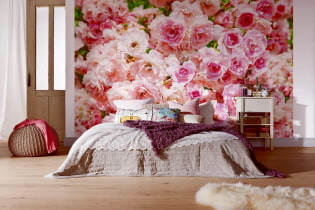 Wall mural with flowers in the interior: living wall decor in your apartment
Wall mural with flowers in the interior: living wall decor in your apartment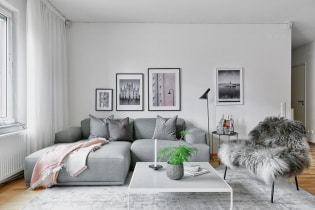 Gray sofa in the interior: views, photos, design, combination with wallpaper, curtains, decor
Gray sofa in the interior: views, photos, design, combination with wallpaper, curtains, decor Interior in peach tones: meaning, combination, choice of finishes, furniture, curtains and decor
Interior in peach tones: meaning, combination, choice of finishes, furniture, curtains and decor